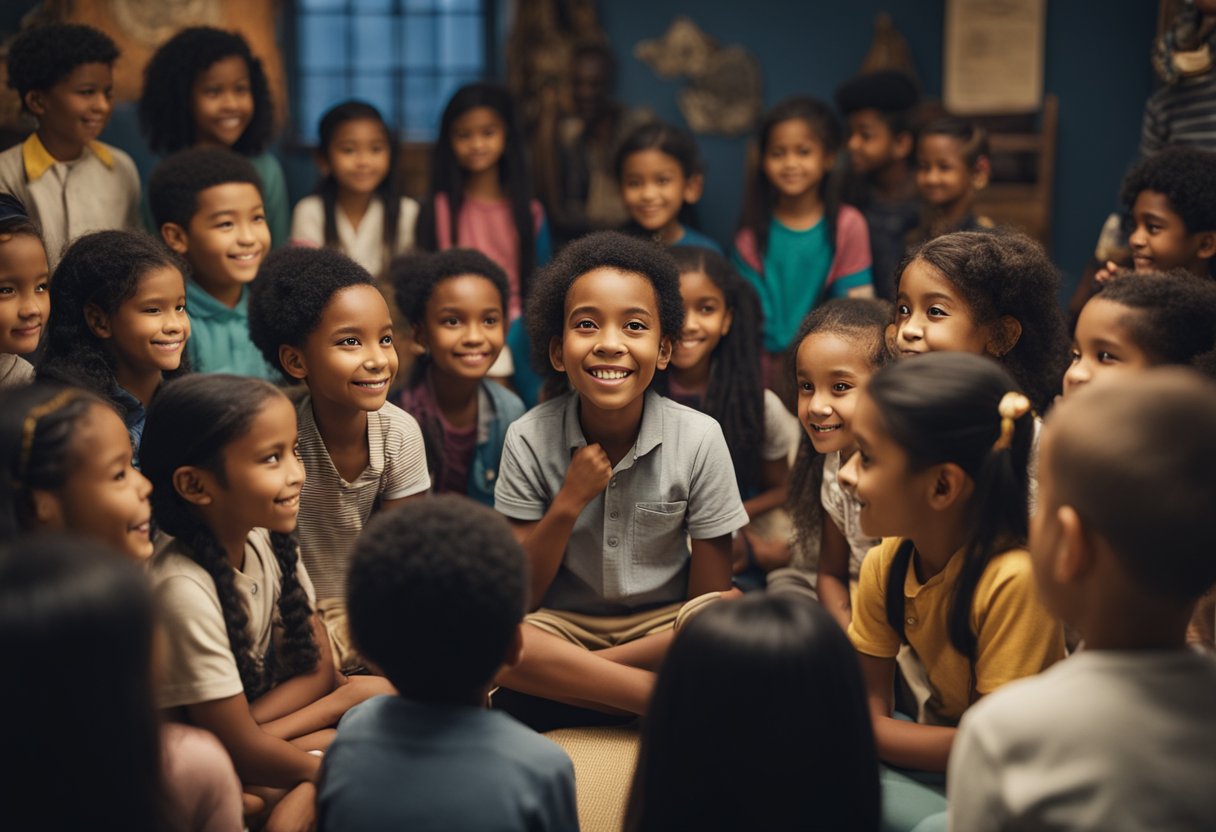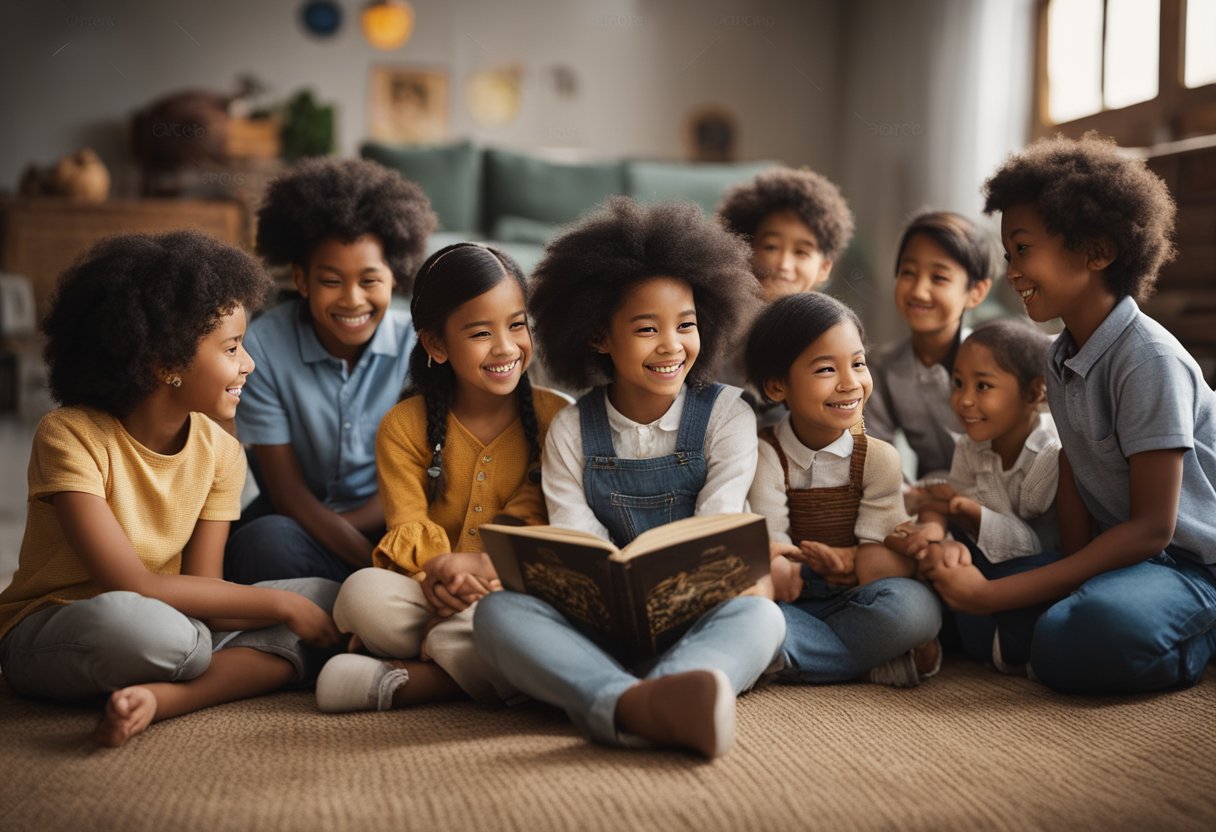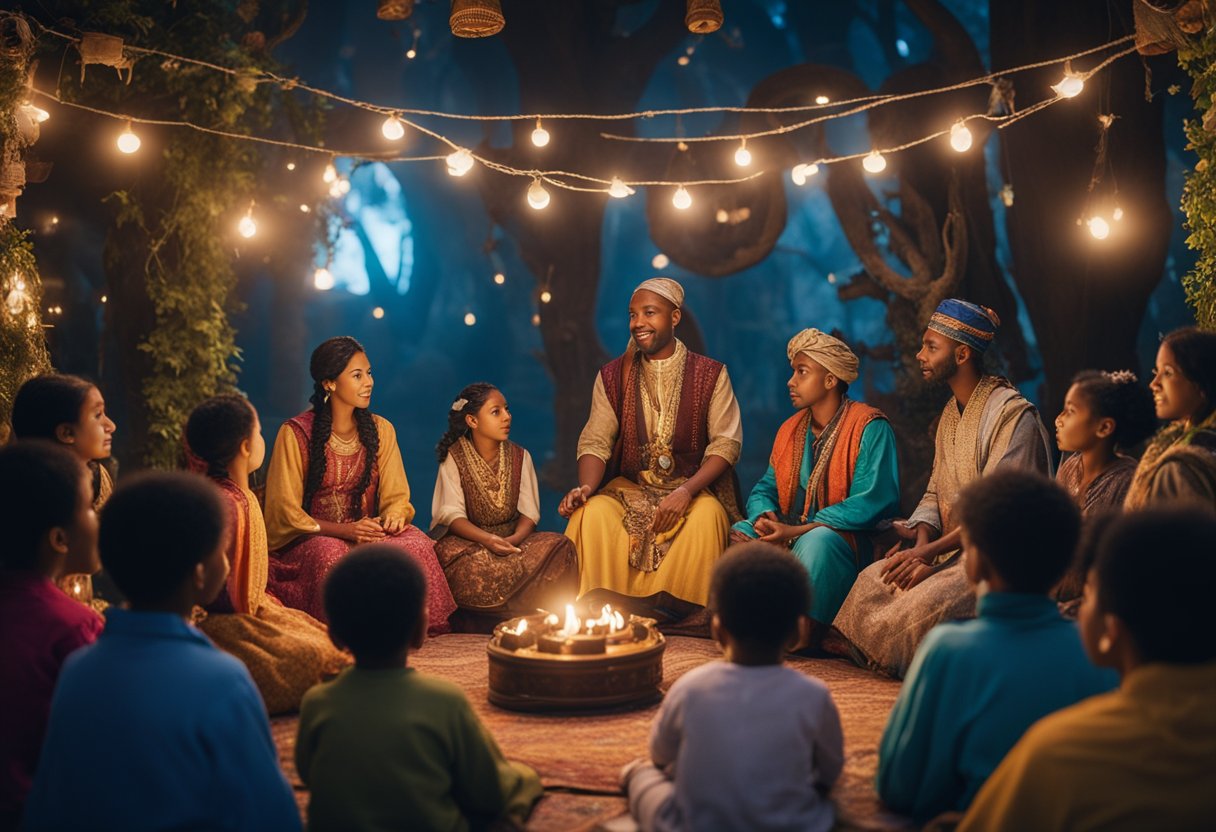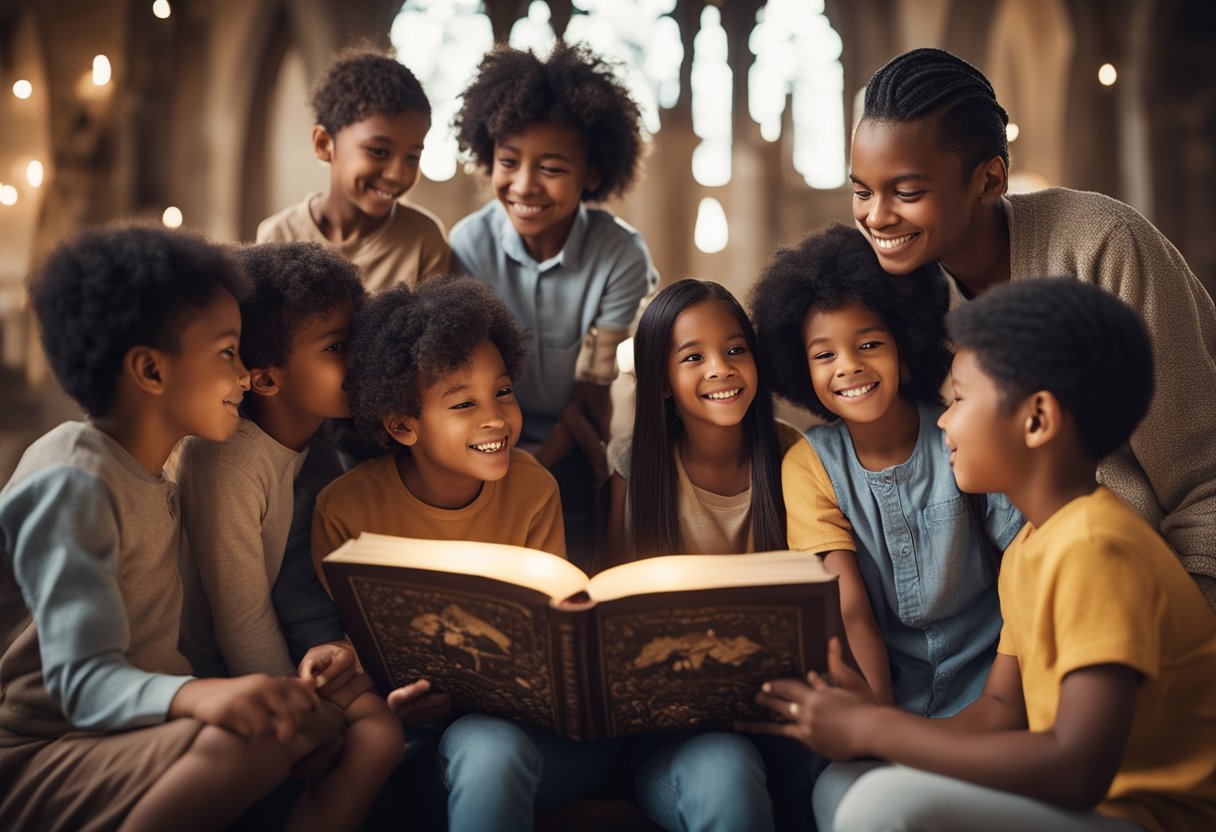Fairy Tales: Unravelling Their Cross-Cultural Appeal

Updated On: March 20, 2024 by Raghda Elsabbagh
Fairy tales have long captivated audiences across the globe, providing a mirror to the values, hopes, and fears of diverse cultures throughout history. These timeless stories are woven into the fabric of human experience, transcending geographical boundaries and cultural barriers. They offer universal lessons, embody essential human archetypes and often serve as educational tools, highlighting the commonalities among different societies.

Cultural studies have further illuminated how fairy tales adapt and evolve as they travel from one culture to another, acquiring unique characteristics and reflecting local mores and narratives. Such comparative studies shed light on the immense cultural impacts these tales exert, shaping not only individual stories but also informing personality and morals. Fairy tales are not just for entertainment; they are a business, a pedagogical tool, and a bridge between the ancient and modern worlds through their narrative techniques and character motifs.
The Universality of Fairy Tales

Geographical borders do not bind fairy tales; their themes and archetypes resonate universally, weaving through the cultural psyche of societies worldwide. These stories carry the power to connect deeply with individuals across different cultures.
Cultural Psychology of Tales
Fairy tales often serve as a mirror to the cultural psychology of a society. Through the enchanting narratives of these tales, we can discern cultural differences in cognition and behaviour. For instance, research has shown that the way German and Chinese children understand fairy tales is influenced by their respective culture-specific thinking models. We can see the layered complexity of fairy tales and appreciate how they are both shaped by and reflective of cultural norms, highlighting their malleable yet ubiquitous nature.
Global Resonance and Reach
The vast global resonance and reach of fairy tales attest to their universal appeal. They possess the ability to cross cultural boundaries, maintaining relevance despite the diverse socio-cultural contexts in which they are told. Moreover, by re-orienting the fairy tale, contemporary scholars and storytellers are exploring and amplifying non-Euro-American traditions, reinforcing the idea that these narratives are truly global in scope.
Such efforts expand our understanding of the universal themes within fairy tales, ensuring that myriad cultural voices are included in the larger story they tell about humanity. The collection “Re-Orienting the Fairy Tale” is a testament to these cross-cultural and interdisciplinary approaches to fairy tales, propelling the ancient tradition into a new, globally connected era.
Historical Evolution of Fairy Tales

The historical evolution of fairy tales reveals their journey from oral tradition to literary institution, demonstrating their ability to transcend cultural borders through exchange and adaptation.
From Oral Tradition to Literature
Initially, fairy tales were part of an oral tradition across Europe and Asia, intended for entertainment and moral instruction. They were tales passed down through generations, often reflecting the values and concerns of the times. For example, the widely known story of Cinderella has been told and retold in many cultures, evolving in narrative and theme along the way.
Literary studies reveal this evolution, illustrating how stories once told by the fireside found their permanence in written form. Scholars such as Jack Zipes have delved into the transition of such stories from the oral domain into literature, identifying key figures like Charles Perrault, who recorded tales like Cinderella and Sleeping Beauty in France during the 17th century. These tales, transcribed from their oral origins, secured a spot in the annals of literary heritage, adopting the polished conventions of written works.
Influence of Cultural Exchange
The exchange of stories between different cultures has dramatically influenced the evolution of fairy tales. Cultural exchange, as a result of trade, conquest, or the sheer movement of people, has allowed stories like Sleeping Beauty to be assimilated and retold in varying contexts. For instance, while Europe provided a haven for such stories to flourish, the influence of Asia on certain tales is undeniable—many don’t know that some of the earliest Cinderella-like stories originate from China.
This blending and shaping of narratives reflect a dynamic exchange of motifs and plot elements, a testament to cultural exchange as an engine for literary evolution. It’s this intermingling that has allowed fairy tales to remain relevant, morphing to align with contemporary societies’ norms and values whilst retaining a sense of timeless appeal.
Cultural Studies and Fairy Tales

Fairy tales are a fascinating focal point for cultural studies because they offer insights into how different societies think, behave, and interact with their world.
Socio-Cultural Analysis
We can discern a lot about a society’s values and norms by examining the socio-cultural elements within its fairy tales. The study of culture-specific thinking models is incredibly useful here; it helps us understand how different communities may interpret the same narrative elements in varying ways. For instance, a tale about a courageous hero might underline the value of individualism in one culture but serve as an allegory for community collaboration in another.
Cultural Context and Interpretation
The cultural context in which a fairy tale is told hugely influences its plot development and its interpretation. By applying a cultural lens, we can enhance our understanding of the nuances that define storytelling across different societies. It is fascinating to observe how the same fairy tale adapts and evolves when it is told within different cultures—or even how the moral of the story can shift according to the cultural context in which it is received.
Character Archetypes in Different Cultures

In exploring the diverse landscape of fairy tales across cultures, we find recurring archetypes that resonate with universal themes of heroism and villainy, as well as unique cultural character traits. These archetypes help us navigate the complexities of character evaluation in various societal contexts.
Heroism and Villainy
Fairy tales often depict heroes and villains, reflecting cultural values of individualism or collectivism. European tales frequently focus on lone heroes facing trials, such as Prince Charming, embodying individual valour. In contrast, non-Western narratives might present heroism as a collective endeavour, emphasising community and interdependence. Villains, often symbolising societal fears, vary from the tyrannical stepmothers of Western fairy tales to mythical creatures in other traditions.
- Hero (individualistic): lone challenger, personal glory
- Hero (collectivist): group effort, community triumph
- Villain: societal fears personified, from wicked stepmothers to mythic beings
Cultural Character Traits
Cultural character traits within fairy tales can shed light on how communities regard individuation and convergence in their social context. For example, attributes like humility and diligence are often lauded in Asian tales, aligning with collectivist ideologies. Conversely, the elevation of cunning and resourcefulness in Western narratives can indicate a value placed on individualism and personal achievement.
- Asian cultures: Humility, diligence, respect for community
- Western cultures: Cunning, resourcefulness, individual triumph
Through these lenses, character judgment within fairy tales becomes a reflection of broader societal values and norms.
The Pedagogical Role of Fairy Tales

Fairy tales play a critical role in education and cognitive development, enriching children’s literature and serving as a fundamental tool in learning.
In Educational Programmes
In educational programmes, fairy tales are a staple. They are used to introduce children to a world of morality, critical thinking, and cultural awareness. Our approach to incorporating fairy tales into the curriculum goes beyond just reading and listening. By analysing storytelling traditions, students learn about the structure and elements of stories, which bolsters their language skills and literacy. We encourage students to compare and contrast culturally different versions of fairy tales, examining how stories like Cinderella have been adapted across cultures. This not only broadens their understanding of narrative but also their awareness of global cultures, aligning with Connolly Cove’s expanded horizon.
In Cognitive Development
Regarding cognitive development, fairy tales are invaluable. They foster imagination and problem-solving abilities in children. Educational research shows how culture-specific thinking models may influence the way children understand stories, suggesting that engagement with fairy tales can help develop critical cognitive skills. Our programmes employ fairy tales to promote language development through storytelling techniques that are both enjoyable and educational. As we delve into the tales, children learn to identify patterns, sequences, and character development, which are crucial cognitive milestones in early education.
Through our collective efforts in education, we integrate fairy tales in a manner that respects the cultural richness and cognitive growth of our children, much like Connolly Cove’s dedication to exploring and celebrating cultural diversity.
Comparative Studies of Fairy Tales

Comparative studies of fairy tales reveal how story narratives bridge cultural differences, allowing us to understand prevailing similarities and distinct cultural nuances. These studies also adopt varied methodologies to examine how such tales are perceived across cultures.
Cross-Cultural Similarities and Differences
In comparative fairy tale studies, story elements demonstrate both universal themes and cultural specificities. A study may uncover similarities, such as recurring motifs or moral lessons that resonate across different societies. For example, the concept of ‘good triumphing over evil’ is a common thread found in fairy tales from China to Africa. The studies also identify stark cultural differences that exemplify how tales are tailored to reflect societal norms and values, illuminating local ideologies and practices. In terms of cross-cultural story comprehension, such research highlights how audience interpretations vary due to cultural contexts, making cross-cultural comparisons a rich field of investigation.
- Item-based analysis is frequently employed to dissect fairy tales into their narrative components. Each item, such as character types or magical objects, is analysed to track their presence and variance across cultures.
- Factor analysis may be used to understand underlying relationships between various story elements and their cultural significance.
Methodologies in Fairy Tale Studies
Our approach to examining fairy tales involves a blend of qualitative and quantitative research. This dual method allows us to dive into the specifics of how stories function within and across cultures.
- Qualitative research: Offers in-depth analysis of narratives, identifying cultural values embedded within the story’s structure. Interviews and textual analysis are some techniques that shed light on the narrative’s cultural context.
- Quantitative research: Employs statistical tools to identify patterns across a large corpus of tales, supporting broader generalisations about themes and motifs.
Through these methodologies, comparative fairy tale studies offer a nuanced lens into the fabric of different societies, showcasing the dynamic interplay of stories with cultural identities.
Narrative Techniques Across Cultures

Narrative techniques within fairy tales vary significantly across cultures, shaped by distinct traditions and values. Such techniques include the representation of elements within the stories and how time and space are utilised.
Concrete vs Symbolic Representation
In our storytelling, we often see a difference in how cultures employ concrete versus symbolic representation. Western narratives typically incline towards concrete representation, where elements of the plot are directly linked to real-world objects or experiences. In contrast, many non-Western cultures lean on symbolic representation, as noted in works like “How Culture Shapes the Reading of Fairy Tales: A Cross-Cultural Approach”, where the storytelling contains layers of metaphor and allegory that reflect broader spiritual or societal norms.
Time and Space in Storytelling
The use of time and space within fairy tales varies widely among cultural traditions. Western stories often depict concrete time, with a linear timeline that leads characters through their journey. However, in many Eastern narratives, there is an embrace of symbolic time with a more fluid spatial perception, allowing for cyclic patterns of storytelling and a rich spatial imagination that transcends physical boundaries. This difference in spatial perception can deeply affect how the plot unfolds and is perceived by the audience, as seen in academic explorations like the course “Popular Culture and Narrative: Use and Abuse of the Fairy Tale”, which examines the structure and transmission of fairy tales across cultures.
We observe that narrative techniques are far from universal; they are instead deeply entwined with the cultural fabric that weaves each tale.
Case Studies in Adaptation

Exploring the timeless appeal of fairy tales through cross-cultural adaptations illuminates how these stories resonate universally while reflecting unique cultural perspectives.
Cinderella Across Cultures
The Cinderella story has undergone countless adaptations across the globe, demonstrating its versatility. In each retelling, the core elements of the narrative are maintained: The downtrodden protagonist, a form of magical intervention, and the eventual triumph over adversity. However, it’s the cultural nuances that offer a fresh take and resonate with local audiences. For instance, the glass slipper may be replaced with more culturally specific items such as a golden slipper or embroidered shoe, and the setting might shift from a grand castle to a traditional dwelling unique to the region.
Regional Takes on Little Red Riding Hood
The tale of Little Red Riding Hood represents a fascinating example of regional adaptation. Recognised worldwide, the narrative of a young girl’s encounter with a wolf has seen its characters and moral lessons shift shape to reflect local mores and fears. While European versions might emphasise the dangers of straying off the path, retellings in other regions can present the wolf character as less menacing or perhaps focus on the importance of community and mutual support. Each version offers insight into the values and teachings deemed important in a given culture.
By examining these stories, we discern how folktales and retellings act as a mirror to society, echoing back its values, norms, and struggles in a way that is both familiar and new.
The Business of Fairy Tales
Fairy tales have proven to be a lucrative business sector that spans various forms of media. Publishers, production companies, and authors have capitalised on their timeless appeal, pushing creative boundaries and exploring new markets worldwide.
Publishing Around the World
In the realm of publishing, fairy tales have a broad appeal. Anthologies of fairy tales are compiled and distributed globally, offering a gateway into the cultures and ethics of different societies. Picture books, on the other hand, serve as a visual treat for younger audiences, embellishing traditional stories with vibrant illustrations. These editions are tailored to diverse markets, with local publishers often adding a regional twist to classic tales.
Cinematic and Theatrical Interpretations
Turning to cinematic and theatrical interpretations, these classic tales have found a new life. Theatrical adaptations bring these stories to the stage, drawing in audiences with the promise of a shared, enchanting experience. Meanwhile, the film industry has tapped into this rich vein, producing films that reinterpret these narratives, ranging from faithful retellings to dark, contemporary versions that showcase an appeal to the origin of these often centuries-old stories.
Cultural Impacts on Individual Stories

In exploring the cultural impacts on individual stories, it’s clear that the interpretation and reception are deeply rooted in the cultural context, shaped by psychological paradigms.
Cultural Narratives in Sleeping Beauty
“Sleeping Beauty” is a classic example of how cultural context can infuse a tale with unique local flavours. While the story is universally known for the princess who falls into a deep sleep, awakened by a prince’s kiss, different cultures highlight varying aspects aligned with their values. In some versions, the focus on familial bonds and respect for elders is prominent, aligning with collectivist cultures that value community. In contrast, other interpretations lean towards individualism and personal triumph, resonating more with Western audiences. This reflects the cultural psychology behind storytelling and the subconscious messages conveyed through folklore.
Aschenputtel and the Brothers Grimm
The German tale of “Aschenputtel,” collected by the Brothers Grimm, serves as an intriguing case of cultural nuance within folklore. Unlike the more sanitised “Cinderella” most are familiar with, “Aschenputtel” includes darker undertones and a more vengeful protagonist—a reflection of the Grimm brothers’ mission to preserve the cultural heritage of Germanic folklore. The tale includes deeper themes of justice and retribution, with the cruel stepsisters meeting a grim fate, embodying the historical and cultural context of German storytelling of that era. Such narratives not only entertain but offer insights into the collective psyche and the inherent societal norms present during the time of their inception.
Personality and Morals in Fairy Tales

In the realm of fairy tales, personalities and morals are not just story elements; they are the guiding forces that frame the narrative and impart valuable lessons.
Values Promoted by Folktales
Humility and resilience are common virtues extolled within folktales. For instance, characters who display humility often triumph despite their seemingly low status, illustrating that modesty is a cherished quality across various cultures. In tandem, tales highlight resilience as characters persist through hardships, emerging stronger; this echoes the cultural value placed on overcoming adversity.
- Humility: Characters like Cinderella are rewarded for their humble natures.
- Resilience: Characters such as The Little Mermaid persist through trials, exemplifying endurance.
In exploring how culture shapes the reading of fairy tales, it is evident that the underpinning values can significantly influence the way stories are told and received.
Morality and Consequences in Tales
Fairy tales serve as moral compasses, setting out clear consequences for actions that embody the ethics of the culture from which they originate. Moral tales often delineate between right and wrong, rewarding virtuous behaviour and punishing wrongdoing.
- Ethics: Acts of kindness in stories like “The Good Samaritan” are praised.
- Individualism vs Collectivism: Tales from Western cultures often feature individual heroics, while Eastern narratives may emphasise collective effort and success.
Stories can be seen as reflections of societal norms; the impact of traditional and modern fairy tales on society demonstrates how literature perpetuates the prevalent moral framework of its time.
Frequently Asked Questions

In this section, we discuss the enduring charm of fairy tales and their impact on various cultures. We delve into how these stories mirror societal values, educate youth, and evolve, reflecting the dynamic nature of culture itself.
What are the main factors contributing to the universal appeal of fairy tales?
Fairy tales captivate audiences worldwide due to their timeless themes, such as the triumph of good over evil and the importance of courage and kindness. These narratives often embody universal experiences that resonate across cultural boundaries.
In what ways do fairy tales reflect the values and customs of different cultures?
Fairy tales act as mirrors that reflect the core values and customs of the cultures they originate from. Elements like family ties, societal roles, and moral lessons present in fairy tales can offer a glimpse into the priorities and beliefs of different societies.
How do fairy tales contribute to the cultural education of children?
Children learn about cultural norms, ethics, and the consequences of actions through the allegorical content of fairy tales. These stories are tools for imparting important life lessons and cultural wisdom to younger generations in an accessible and memorable way.
What role do fairy tales play in the development of cultural identity?
Fairy tales play a crucial part in shaping cultural identity by reinforcing a sense of shared history and values. They are a form of cultural heritage that connects individuals to their community and the larger narrative of their cultural group.
How has the interpretation of fairy tales evolved across cultures over time?
As cultures interact and societies change, the interpretation of fairy tales evolves to reflect new values and perspectives. Different versions of a tale can emerge, highlighting the adaptability of these stories to different cultural and historical contexts.
Can the study of fairy tales offer insights into the communication practices of a society?
Analysing fairy tales can reveal insights into a society’s communication practices, illustrating how stories are used to convey messages, share wisdom, and reinforce societal norms. This study can also highlight how narrative styles differ between cultures.






